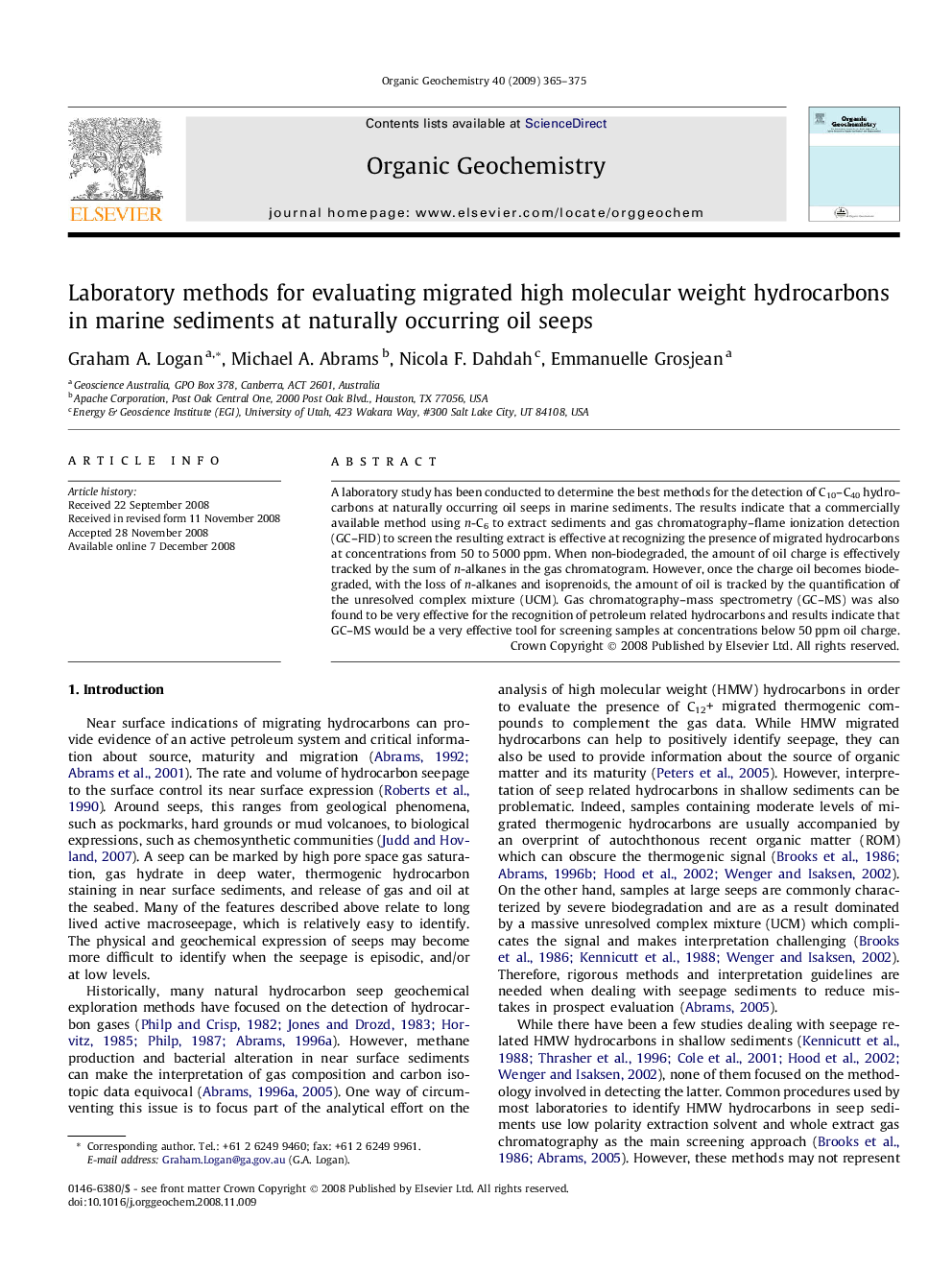| Article ID | Journal | Published Year | Pages | File Type |
|---|---|---|---|---|
| 5163662 | Organic Geochemistry | 2009 | 11 Pages |
Abstract
A laboratory study has been conducted to determine the best methods for the detection of C10-C40 hydrocarbons at naturally occurring oil seeps in marine sediments. The results indicate that a commercially available method using n-C6 to extract sediments and gas chromatography-flame ionization detection (GC-FID) to screen the resulting extract is effective at recognizing the presence of migrated hydrocarbons at concentrations from 50 to 5000Â ppm. When non-biodegraded, the amount of oil charge is effectively tracked by the sum of n-alkanes in the gas chromatogram. However, once the charge oil becomes biodegraded, with the loss of n-alkanes and isoprenoids, the amount of oil is tracked by the quantification of the unresolved complex mixture (UCM). Gas chromatography-mass spectrometry (GC-MS) was also found to be very effective for the recognition of petroleum related hydrocarbons and results indicate that GC-MS would be a very effective tool for screening samples at concentrations below 50Â ppm oil charge.
Related Topics
Physical Sciences and Engineering
Chemistry
Organic Chemistry
Authors
Graham A. Logan, Michael A. Abrams, Nicola F. Dahdah, Emmanuelle Grosjean,
